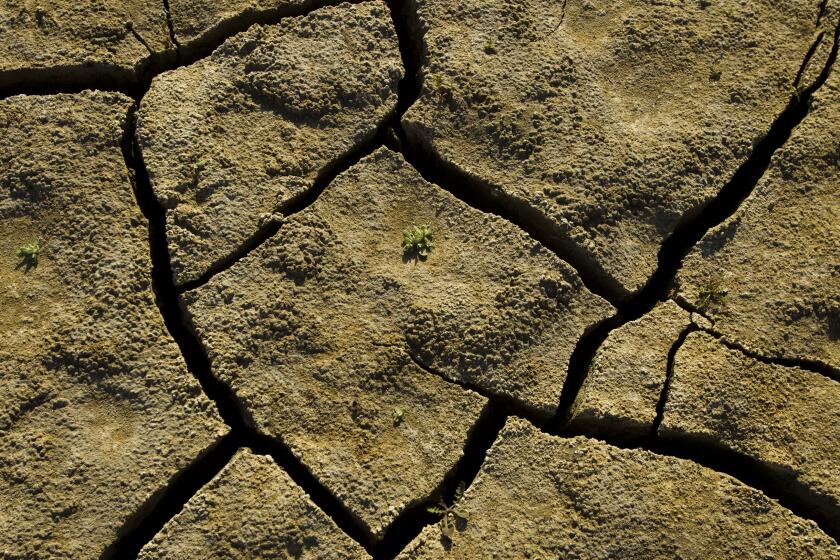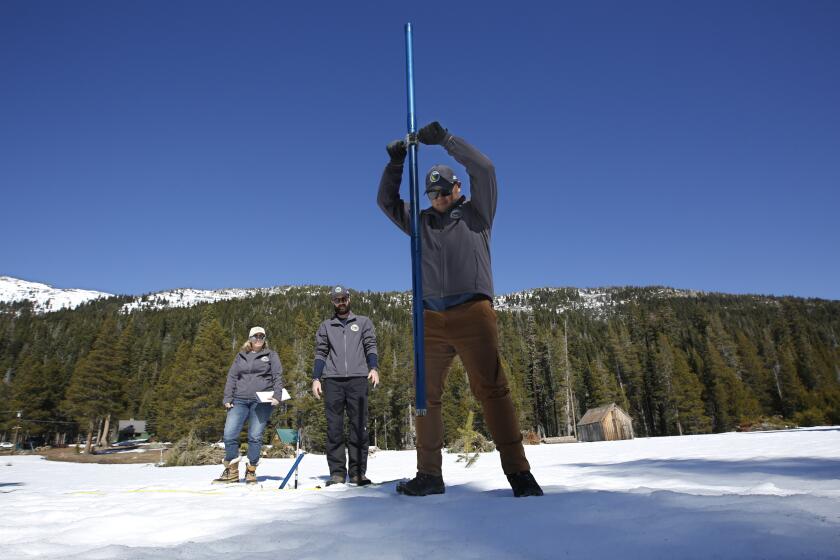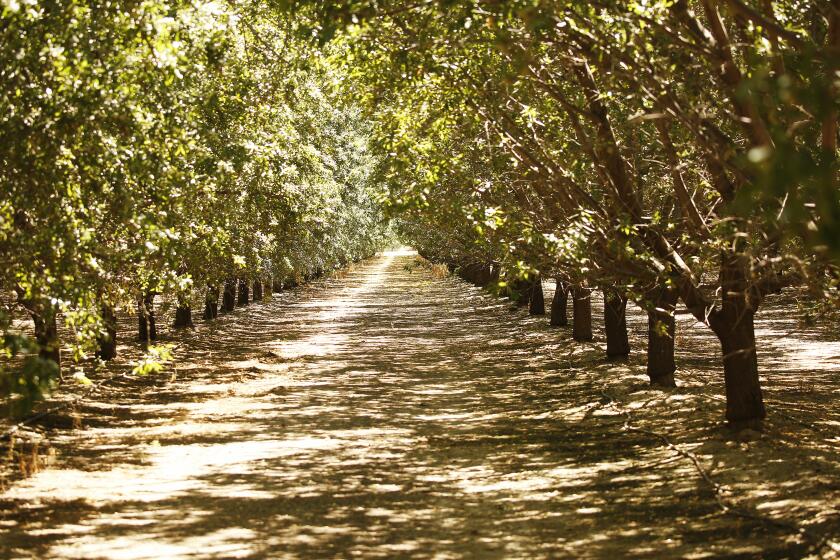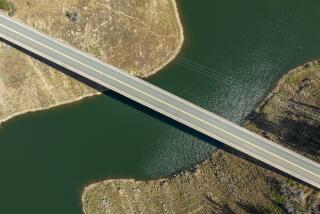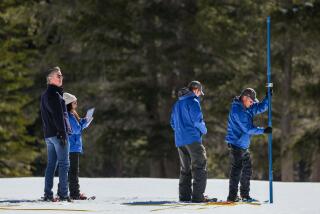Newsom launches effort to deal with drought; emergencies declared in two counties
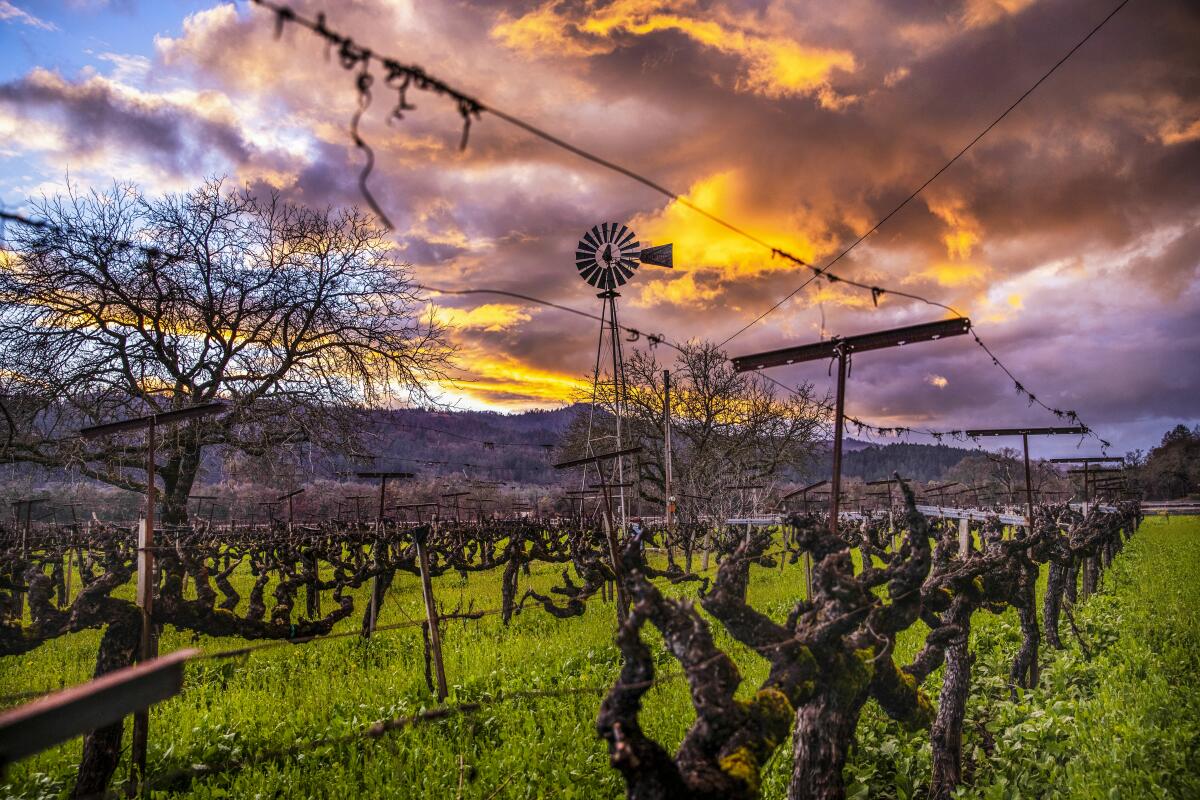
- Share via
Gov. Gavin Newsom on Wednesday declared a drought emergency in two Northern California counties as he stood on the dry shoreline of Lake Mendocino.
The declaration gives state regulators expanded powers to curtail diversions in the parched Russian River watershed and relax river flow standards that would require more releases from the region’s shrinking reservoirs.
Newsom has been under pressure from some quarters to declare a statewide drought emergency. But the administration favors a more targeted approach.
Noting that water supply conditions vary across California, Newsom said he was not prepared to adopt statewide mandates.
California has entered another drought. But depending on who you ask, the last one may have never really ended.
He also cited the 16% drop in overall urban water use since 2013, the eve of the last major drought. Californians, he said, “have a conservation mind-set.”
The drought situation is particularly acute in Mendocino and Sonoma counties because the local water supply is dependent on rainfall in the Russian River watershed.
The second parched winter in a row has left the region’s reservoirs in even worse shape than during the severe 2012-16 drought. The major water district has warned that Lake Sonoma and Lake Mendocino could reach historically low levels by October.
A bit to the south, the Marin Municipal Water District this week banned daytime outdoor watering, washing vehicles at home, hosing down driveways and watering grass on public median strips.
The agency, which serves most of the cities and towns in Marin County, could adopt further restrictions next month as it strives to cut the district’s overall water use by 40%.
Record amounts of regional water storage will buffer urban Southern California from the effects of drought this year.
The picture is not nearly as dire in Southern California, which is mostly supplied by big federal and state water systems, rather than local precipitation.
The Metropolitan Water District of Southern California, which imports water from the Colorado River and the north, says it has record reserves in regional reservoirs and groundwater banks — enough to carry it through this year and next.
Los Angeles, which is partly supplied by the MWD, similarly doesn’t anticipate any shortages.
With the brown shores of the two-thirds-empty Lake Mendocino in the background, Newsom signed a five-page executive proclamation that declared a state of emergency in Mendocino and Sonoma counties.
The document also orders state agencies to work with local districts across California to address drought conditions.
History shows that if water agencies and other leaders acknowledge drought and offer solutions for more efficient water use, Californians will step up.
The state steps include promoting conservation, accelerating funding for water supply improvements and offering technical assistance to monitor drinking water wells.
In recent weeks Central Valley Republicans in particular have urged Newsom to declare a statewide drought emergency, which would allow state regulators to relax water quality and environmental standards that limit deliveries from the Sacramento-San Joaquin delta, California’s water hub.
But state officials have said they have enough management tools at their disposal to deal with this year’s dry conditions on a regional basis.
“It’s time that Californians plan to move away from drought emergencies and get to drought management,” Department of Water Resources Director Karla Nemeth said last month.
